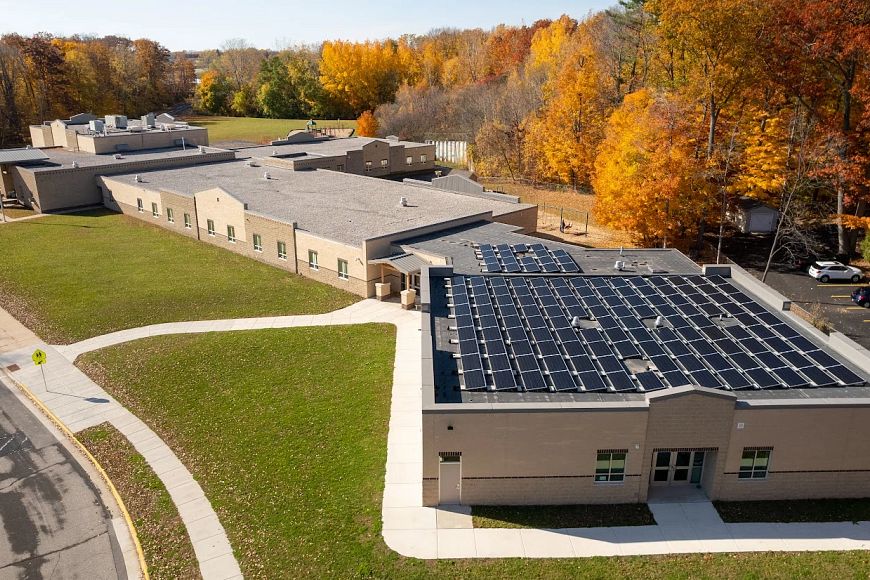Contact: DNR Office of Communications
DNRPress@wisconsin.gov
DNR’s Green Tier Program Welcomes New Legacy Communities
 A solar installation on an elementary school in Sturgeon Bay was funded by a city program that allows residents to purchase blocks of renewable energy funding for local projects.
Photo credit: City of Sturgeon Bay
A solar installation on an elementary school in Sturgeon Bay was funded by a city program that allows residents to purchase blocks of renewable energy funding for local projects.
Photo credit: City of Sturgeon Bay
MADISON, Wis. – The Wisconsin Department of Natural Resources (DNR) celebrates the end of another successful year for the Green Tier Legacy Communities charter with five new members.
The Green Tier Legacy Communities charter is part of the DNR’s Green Tier program. Involvement is voluntary for businesses, local governments and organizations looking to work with the DNR to expand and enhance their sustainability practices. The Green Tier Legacy Communities charter specifically empowers local governments to move toward a sustainable future through initiatives promoting environmental stewardship, economic growth, public health and social equity.
The DNR is excited to officially recognize the city of Sturgeon Bay and the town of Liberty Grove in Door County, and the city of Schofield in Marathon County as Green Tier Legacy Communities. Additional pending members include Rock County and the city of Phillips in Price County.
Each new community has demonstrated a commitment to pursuing environmental goals, and joining this charter will enhance their ability to achieve them. By coming together with the other members to share their progress and knowledge, Green Tier Legacy Communities help each other become more sustainable and resilient. Some of the goals and accomplishments of the new members include:
- The city of Schofield improved energy efficiency across its municipal operations, participated in a collaborative project to install an ADA-accessible kayak launch in the city and completed a water loss study to reduce total municipal water use. Schofield’s sustainability goals include adding a tree canopy, expanding its trail system, reducing municipal energy consumption and prioritizing sustainability education in the community.
- The city of Sturgeon Bay has implemented three free-to-use electric vehicle charging stations for public access across the city. Additionally, the city has encouraged renewable energy adoption by working with the local utility to offer renewable energy blocks for purchase. These blocks fund energy projects around the city, including a solar array installed at a local school and a solar buyback program for participating residents. The city’s utility also operates an anaerobic digester that produces biosolids used as fertilizer on nearby agricultural land. Sturgeon Bay’s goals include improving the energy performance of public buildings, investing in a stormwater management system and continuing to implement the city’s recreation plan.
- Rock County has pursued many energy efficiency projects, including installing a geothermal system at a local nursing home, adding skylights and LED lights on a public building and retrofitting the country courthouse and jail with energy-efficient equipment. The county has a policy to include energy efficiency upgrades in all new facility renovations and hosts two solar arrays that produce 4 megawatts of energy. Rock County aims to generate 25% of its energy from renewable sources by 2025 and be carbon neutral by 2050.
These communities join the existing Green Tier Legacy Communities charter, a network of local governments across the state committed to improving their environmental performance and outcomes.
You can find more information about Green Tier Legacy Communities on the DNR’s website.

